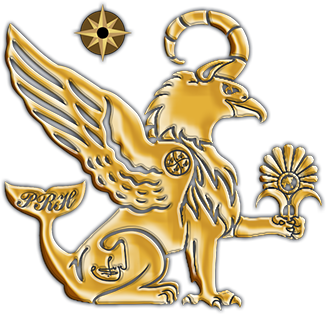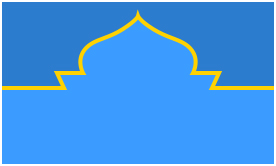Article 18-Tajiks, crowned people of Iranvich
Author: Dr. Reza Hazeli (Key Ashkan Ardalan Afsharnaderi)
Aug. 9, 2022
Preface on the importance of Tajikistan
Indo-Iranian languages are one of the oldest and richest historical languages in the world, which high philosophical thoughts and wonderful worldviews of the people who speak them, have been reflected in books such as "Rig Veda" and "Avesta". People speaking Aryan (Indo-Iranian) languages, as mentioned in the oldest parts of Avesta, including Mehryasht[i], lived in a land called Iranvich. The land of "Iranvich" or in the Avestan pronunciation "Airiyeh vaeja" which means "the root of the land of Aryans" or the land of the first Aryans, was in the area of North Khorasan, important parts of which are located in "Tajikistan" today.
(Iranvich (Airyanem Vaejah) was the center of the Aryan people who later migrated to the north of India and the plateau of Iran, Anatolia, and Eastern Europe and even some families of them such as "Hyksos", "Mithanians" and "Caspians"[ii] to the north of Egypt, founded the greatest civilizations of the ancient world.)
All these Aryan or Indo-Iranian and European civilizing peoples came from "Iranovich", today's major parts of which are in Tajikistan.
Although other parts of Iranvich were located in other Central Asian countries and their archeological areas, the importance of "Tajikistan" is that this country is located in the area of "Iranian civilization" and unlike many countries of Central Asia, which changed their cultural identity after the Mongol invasion, "Tajikistan" still stands proud on the roof of Asia and on the roof of ancient Iranian culture with all the adversities of the times.
Also, it should not be neglected that after the establishment of Islamic-Abrahamic governments in most of the countries of Iranian civilization, including Iran and Afghanistan, and the replacement of Iranian identity with Abrahamic identity, Tajikistan is today the only flag-bearer of Iran's ancient civilization. Therefore, the survey and research about the land of "Tajikistan" and the "Tajik" people throughout history are very important.
From Iranvich to Tajikistan
The land that we call "Tajikistan" today, has been called by various names throughout history, all of which have had roots in Iranian culture. As mentioned earlier, today`s Tajikistan and North Khorasan have been called "Airiah Vaejeh", "Iranovich"[iii] and "Arianovich" based on the oldest parts of the Avesta, including "Mehr Yasht"[iv]. This name was given to this land when the oldest parts of Indo-Iranian literature were written in "Avesta" and "Rig Veda", i.e. from the 5th to the 3rd millennium BC. The archeological fields of Central Asia, which are all related to "Iranovich", show the antiquity, originality, and great development of the ancient Aryan civilization.
"Andronova"[v], "BAMC"[vi], and "Yaz"[vii] archeological fields completely show the transformation process of the highly advanced civilization of "Airia Vaeja", "Iranovich" or "Arianovich" from the Neolithic Age to the Bronze and Iron Ages and their geography is completely conformed with the geography of "Iranovich" in Avesta. the very important parts of the archeological field of "BMAC" today are located in Tajikistan and Balkh in North Khorasan (Afghanistan). It is quite obvious that in the Bronze Age and the beginning of the Iron Age, these lands were called "Airiyeh" or "Iranovich", although this archeological area today is incorrectly called the Bactria-Margiana[viii] civilization area due to political reasons[ix], which this denomination is inconsistent with the ancient writing "Mehrisht" of Avesta.
Undoubtedly, Except for this name that the people of this land have given to it, in the books And the classic Greco-Roman historical maps that were written thousands of years after the "Avesta", the name of northern and even southern Khorasan was "Ariana"[x].
Ariana, Latinized Greek word 'Αρειανή with the pronunciation of Arianē according to "Strabo"[xi]; It includes parts of Tajikistan and Afghanistan, parts of eastern Iran, and parts of present-day Pakistan. Later, also writers like Elyan have spoken of "Indian Ariana" as a geographical term.
The term Ariana was also used by the Greek geographer Eratosthenes (194-276 BC), who is known as one of the first mapmakers of the world based on the geographical knowledge of his time, and he determines on his map a large territory called "Ariana" , which places it between the Mesopotamia and India.
Based on that; He considered the borderline of this land to be the Indus River in the east, the Makran Sea in the south, a line from Carmania to the Caspian gates in the west, and the Taurus Mountain ranges in the north And as Strabo emphasizes, it is known by the same name as "Ariana", and a nation as well[xii]. Of course, it is quite obvious that the dimensions and scale of Eratosthenes' map are not accurate, and there is more accurate information about the position of Ariana and its cities in Avesta, and these northern borders of "Ariana" are further north than what Eratosthene thought.
Also, the name of the ancient city of Herat, which appears in the Avesta as "Haraveiti" and the ancient Greeks called it Haroyum/Haraiva, has its roots in the name "Arya" and is considered as proof that "Arya Na" is the same as "Khorasan" that was one of several metropolises of this land. On the other hand, the name of the language of the people of this land is mentioned "Aryeh" in the "Kanishka" inscription of the Kushani king, known as the "Rabatak" inscription, which with a slight change and adding the Pashto prefix "d" to it is called "Darieh" and then until today "Dari", It shows that in addition to the Aryan land and cities, there was also the "Aryan" or "Dari" language, which is known today by other names such as "Persian" and "Tajik". According to "McKenzie's" writings, "Iran Vij" was called the regions of "Azerbaijan" at the end of the Sassanid Empire, but at the beginning, it was referred to the regions near "Sogd and Balkh". According to the definition of "Iranvij" in the first chapter of "Vendida", it means the land of the first Avesta missionaries[xiii]. The name "Iran" and its compounds such as "Iranzamin" and "Iranshahr" all have their roots in the ancient name "Airiyeh Vaejah". The name "Iran" and its compounds are mentioned nearly two thousand times in "Shahnameh Ferdowsi", which is based on the "Khoday Namak"s of the Sassanian era.
It should be noted that the land of "Sogd", which was the northern part of "Airiyeh" or "Iranvich" and "Ariana", in the ancient map of "Eratosthenes", is the same land that is called "Tajikistan" today. The name "Tajikistan" is a new name for this land and it was used officially for the first time with the formation of the Socialist Republic of Tajikistan within the former Soviet Union in 1929, Although the name "Tajik" existed before that and it was also said to the Farsi speakers of Central Asia and North Khorasan and even some people of the central regions of Iran[xiv].
In Iran, a large number of Tajiks live in Varamin region. Tajiks are one of the oldest tribes of Varamin and Iran, and most of these people still have the same surname as Tajik.
Varamin was one of the villages of Raga (Rey) during the Sassanian era. Some historians believe that the formation of the Tajik people in these areas is related to the Sasanian era and they are one of the oldest inhabitants of these areas[xv].
According to "Mirza Shakurzadeh", a Tajik researcher and author of the book "Tajiks on the Path of History", based on researches, Persian-speaking people have introduced themselves as "Tajiks" in many parts of Central Asia, Iran, Afghanistan, and even Kashmir and Kashgar. The word "Tajik" is used a lot in classical Persian literature and it is often used against Turks and Arabs:
For example, Saadi says:
Maybe they will tell the king / your Turk shed Tajik blood
Or Jami has pointed out Ali Shirnavai:
He was a Turk and I was a Tajik / we both had close relatives
And again Saadi says in another place that:
My Turkish and Tajik beloved ruins hundreds of houses / with those Tajik eyes and Turkish eyelashes
Today, most Tajiks consider "Amir Ismail Samani" as the founder of "Tajikistan". However, the origin of the "Samanian" dynasty goes back to the "Mehran" and "Bahram Chubin" families, and they have always called themselves "Iranian" and "Khorasani"
The etymology of the word "Tajik"
Although there are different opinions about the etymology of the word "Tajik", one look for researchers who are familiar with several branches of human sciences at the same time and place "linguistics" along with "history" and "archeology" and "sociology of clothing", it is obvious that only one root for this word is closer to the truth, and It has its roots in the word "Taj" in the Persian language (Dari). It should be noted that the archeological fields in Great Khorasan all show that "Iranian monarchies" or "Iranian crown princes" have always existed in Great Khorasan throughout history from the Bronze Age until after the Arab occupation and the Muslim invasion and the Iranian crowns princes and kings among the people has been so popular to some extent that men and women of Khorasan have been wearing hats that look like "small crowns" since ancient times till now. In the Persian (Dari) language, by adding the diminutive "K" ک) ( to the word "Taj", the word "Tajak" or "Small Taj" is created, of which the word "Tajik" is another pronunciation. In other words, "Tajiks" are actually small crown citizens under the rule of the Iranian crown princes (Iranian monarchy) in Great Khorasan, which is evident in the clothes of men and women of Khorasan until now (Photos 1, 2, 3, 4) and Interestingly, the crown (Taj) symbol is still present on the flag of "Tajikistan" even though this country is a republic today (Photo 6).
The surprising point is that almost all Khorasani and Iranian hats are examples of small crowns with various designs. In addition to Tajik men's and women's hats, the Tajik "Pakol" hat in North of Khorasan (Afghanistan) is also very similar to a type of crown and this hat is the one that today, its modified version, is put on the heads of students and scientists in the graduation ceremony of all universities in the world in honor of Khorasani scientists and their outstanding works throughout history. (Photo3)
Another noteworthy point is that even the "Khorasani kerchief" is different from other kerchiefs and turbans (Dɑstɑr), and a part of the fabric of that kerchief rises up in the front part of the forehead as a "crown", which is especially evident in the statues of Ferdowsi, the Khorasani Persian speaking poet and the turban of the local people in Iran's Khorasan and their folklore dress is also the same so far. (Photo 5)

Photo2: Tajik women's hats are obviously like crowns Photo1: Crown-like hat with a Tajik crown design
The Latin word "Tiara"[xvi], which has been used among Scythian Iranian clans in the north of the Caspian Sea and is still used in European languages, and it means a female crown, is cognate with the Iranian word "taj". Also, the popularity and use of the name "Taj" in Khorasan can be seen in the Iranian name of the city "Tashkent" in Central Asia and close to present-day Tajikistan. The name "Tashkent" is made from two parts "Tash=Taj" and "Kand=digging up", which obviously means that the city has been built or dug up by a crown prince and a king.

Photo 4: A women's crown-like hat of the Tajik Photo3: "Pakol" hat among Afghan Tajiks It is
the wedding dress. obviously a half crown.

Photo 5: Even the Khorasani turban (Dastar) is tied like a crown throughout Khorasan, like the Ferdowsi turbɑn (Dastar)
One of the greatest writers and poets of Tajikistan and the first president of the Academy of Sciences of Tajikistan, "Sadruddin Aini", also mentioned the meaning of the word "Tajik" in one of his works, crown prince (Tajdar), which is also mentioned by the famous Iranologist and Orientalist Richard Fultz[xvii].

Photo 6: "Crown" emblem on the official flag of Tajikistan
According to the above mentioned, it can be said with high probability that "Tajik" literally means "small crown" and "crowned" (Tajdaran) such as an Iranian crown, although its idiomatic meaning is non-Turkish and non-Arab.
Genetic haplogroup of ancient Tajiks and Iranians
History and anthropology are parts of human sciences, and human sciences are not exact sciences like mathematics, and sometimes various opinions appear about a single issue in these sciences that some of which are far from the truth. For example, to identify the descent of a group of people, it is not enough to use only their language and Antiquities, because migrations to a land throughout history can be slow and gradual, making their genetic identity completely different from their past generations, without changing the language of that people. Therefore, at the beginning of the 21st century, with the advancement of genetic knowledge, the genetic haplogroup of human societies and its three types (the paternal genetic haplogroup yDNA and the maternal genetic haplogroup mtDNA as well as the genetic haplogroup resulting from the past generations Autosomal DND) are used in the accurate recognition of the identity and historical origin Different people and ethnic groups. It should be mentioned that since genetic knowledge is one of the exact sciences, the answer it gives is precise and definite, and there is no difference of opinion in it, as in the human sciences, so everyone can distort the identity of people according to their own taste or political purposes, and in the Science, results do not create confusion and chaos. Among the three genetic indicators; Paternity, maternity, and the results of past generations, the paternal genetic haplogroup is usually used in genealogy research. The paternal genetic haplogroup has two features that are very important in research; One is that this haplogroup is constant after generations and does not change in different generations like other types of genetic indicators, Second, most of the warriors and soldiers and immigrants or invaders to countries in ancient times and throughout history were men, which are very easy to trace with this genetic index.
The results of genetic research published on the genetic haplogroup of the people of Khorasan and North Khorasan, i.e. the two countries of Tajikistan and Afghanistan today, show that more than sixty to seventy percent of the paternal genetic haplogroup or yDNA of these people is R1a and the ancient Iranian branch, this haplogroup or R1a-Z93. Genetic haplogroup R1a is the paternal haplogroup of Aryans, Iranians, ancient Indians, Scythians, and Slavs in Eastern Europe. This shows that about seventy percent of "Tajik" people have Iranian and Aryan fathers, and these results are scientific and definitive, and their accuracy is higher than blood tests to identify the children of the same father[xviii].

Diagram 1
In diagram (1), the percentage of men with the Aryan haplogroup R1a among the Slavs, who are the inheritors of the Scythian Iranian peoples, is clearly visible. This diagram shows that about sixty percent of Slavs have the same paternal haplogroup as the ancient Scythians and Iranians and the people of Tajikistan, Afghanistan, and present-day Iran[xix].

Diagram2
In the second diagram, the percentage of a certain branch of the paternal haplogroup R1a, which is the branch of the ancient Iranians and Iranian Aryans, namely R1a-Z93, is well shown. It is obvious that this paternal haplogroup is more common in "Tajikistan" today than in other Iranian countries and territories, including "Afghanistan" or even the modern country of "Iran". Based on these researches, today it can be said with certainty that about seventy percent of the people of Tajikistan today are back-to-back Aryans in Iranvich and ancient Iran[xx].
"Dari" is the scientific name of the Tajik language and three dialects of a common language; Tajik Dari, Pashto Dari, and Persian Dari
Unfortunately, Iranian studies and Iranian linguistics, like most branches of oriental studies and anthropology, are not only objective and scientific, and political purposes and political geography or geopolitics, as well as the purposeful division of the ancient heritage of early human civilizations, play a role in it. A clear example of such political intention can be seen in the name of the ancient "Aryeh language". What archeological excavations and an objective and scientific look at history tell us is that the name of the common language that is spoken today in Tajikistan, Great Khorasan (Afghanistan), Iran, and some other lands of Iranian civilization is "Arye". In two ancient inscriptions in the territory of Iranian civilization, namely in the inscription of Darius the Achaemenid king in Biston[xxi] in Iran and also in the inscription of Kanishka king of Kushani in Great Khorasan (Afghanistan), known as the Rabatak inscription[xxii], the name of this language is clearly "Arye", which shows that name of the ancestor of this common language has always been the same in the east to the west of the Iranian plateau. After the attack of the Muslim Arabs, the unique nature of this language has always been preserved throughout the Iranian plateau with little change. The name of this language in Great Khorasan, due to the coexistence with another Iranian language or Pashto, the Pashto prefix "d" was added to it and it got the name "De Aryeh" or "Dari". The first speakers and poets of this language, like Rudaki, have always used the name, Dari. In Ferdowsi's Shahnameh, which is one of the masterpieces of this language, since a part of the Shahnameh is a translation of the Sasanian Khodaynames in the land of Persia, and the Persians called their dialect "Persik", along with Dari, the name Persian is also used for this language. Little by little, over the centuries, the Persian dialect of the "Aryan" or "Dari" language has been known as the Persian language, which is actually not a separate language but a Persian dialect of the "Dari" language. Apart from these two names for a single language that have been formed throughout history, the name "Tajik language" for another dialect of this language is a new and fictitious name that has been forged due to political motives in the former Soviet Union to separate the people of Tajikistan from Great Khorasan and Iran. The use of the name "Tajik language" is new since 1929 after the formation of the Socialist Republic of Tajikistan within the former Soviet Union. The fact is that "Tajik", like "Persi", is a dialect of the "Arye" language, which is called "Dari" today. Based on the above arguments, we have only one common language among the people of Tajikistan, Great Khorasan (Afghanistan), and Iran, and the name of this common language is "Arye" based on the oldest ancient inscriptions, where "De Ariye" or "Dari" is the closest to this ancient name. Therefore, scientifically and objectively, it can be said with certainty that the name of the language of these three countries is "Dari" with three dialects "Dari Tajik", "Dari Pashto" and "Dari Persian".
The need to change the script of the Dari language from Cyrillic and Arabic to Iranic script
The tragedy imposed on the speakers of "Dorre Dari" or "Ghande Parsi" does not end only in the name of their language and the human right to speak in their mother tongue, but the Abrahamic enemies of Iranian civilization, have imposed them Tow unfamiliar and non-scientific scripts in order to separate these people as much as possible. The first imposed script is the "Kufic Qur'anic script", which the Muslim Arabs forced Iranians to use, after many massacres and genocide in Iran and Great Khorasan and the burning of most ancient libraries of Iran, including the libraries of the ancient University of "Gondishapur" in Khuzestan and the ancient libraries of Merv and Samarkand, Bukhara, Khwarezm, Hegmataneh and Atorpatgan, and after the destruction of millions of volumes of ancient Iranian books in Avesta, Pahlavi, and ancient Arye languages and scripts, as they wrote in their history books such as "Fotuh Al-Buldan" by Belazari. The compulsion to use the "Qur'an script" which later became known as the "Arabic script" was such that anyone who did not write in this script was called an infidel and forced to pay tribute (Jizya) and subjected to the most severe sanctions and discrimination and the social rights of writers in Pahlavi, Avesta, and other scripts of ancient Iran were severely violated. Therefore, during several centuries of Iran's occupation, little by little, there was no way for Iranians to either emigrate from Iran, which they did, and many of them immigrated to India under the name of "Persians", or They were forced to become Muslims and change their script to Arabic if they wanted to remain in Iranian lands, and even in many areas such as the Iranian cities of Ctesiphon and Baghdad[xxiii], they changed their language to Arabic. It took four centuries for Persophile (Iranophil) Samanid kings to create an "Iranian renaissance" in Merv, Bukhara, and Great Khorasan, and to protect human and Iranian knowledge from Islamic-Abrahamic religious prejudices, they opened the doors of libraries left over from the invasion of Muslim Arabs in Merv, Balkh, and Bukhara because Iranians could translate those ancient sciences either in Dari language and imposed Arabic script or in the Arabic language so that these knowledge remain preserved. Such a great translation movement during the Samanid era caused this knowledge to reach Europeans a few centuries later and became the basis for the "European scientific and cultural renaissance" in the Middle Ages. Scientific books that were only translated into Arabic and had Iranian, Indian, and Greek foundations are today mistakenly called Islamic and Arabic sciences with Abrahamic bias. The prejudice and insistence on calling these sciences Arabic in Europe under the influence of Abrahamic culture were such that "Indian numbers" or numbers in the decimal system, which have been used for thousands of years in India and Iran, were mistakenly and intentionally called "Arabic numbers". It should be noted that many scholars of the Samanid era who translated the knowledge of ancient Iran into Arabic, were forced to Arabicize Iranian words in the Arabic translation due to the poverty of Arabic literature in the equation of scientific terminology at that time. Iranian scientific words such as; "Geometry" is Arabicized of "Handachak" which means "size" in the Dari language, and the word "chemistry" which is Arabicized of Iranian "Kimia", and the word "Algorithm" which Europeans took from the name of the Iranian scientist "Khwarizmi" and other words like "Amber" which means electricity and "Barid" that means to post and thousands of other words in this movement of translating the scientific books of ancient Iran into Arabic during the Samanid period, are the footprints and fingerprints of the main sources of these sciences, which were not produced in the Islamic era but have been translated into Arabic or rewritten in forced Arabic script and Dari language in order to the survival of The hand of religious people who called these sciences blasphemous.
The imposed Arabic script, despite the fact that due to the lack of vowels and having repeated letters, for example, having four letters«ز» (ز،ذ،ض،ظ) with four different pronunciations, three letters «س» ( س،ص،ث) with three different pronunciations and two letters «ت» (ت، ط) with two different pronunciations, is not suitable for the "Dari" or "Persian" language at all, which is an Indo-European language and full of vowels, and has only one pronunciation of the letters «ز» or «ت» and «س» and others like them, it is used until now due to the influence of religious people and supporters of the imposed Abrahamic-Islamic culture in Iran and Afghanistan. However, in "Tajikistan" another script was imposed on Dari speakers, which was also for political reasons and to separate this part of the Iranian people from other Iranians, and that was the "Cyrillic" script. "Cyrillic script" after the formation of the Socialist Republic of Tajikistan in 1929, which was a part of the Soviet Union, was gradually used for political reasons and because of the solidarity with the Russian script, whose script was "Cyrillic" and was the official script of the Former Soviet Union, was imposed on the Tajik people for political reasons, to separate the Iranian identity of Tajiks from other Iranians. Although the "Cyrillic" script is a script made for Indo-European languages that have vowels and is more scientific than the Arabic script, which is not qualified to write Indo-European languages with vowels, including "Dari" not at all, this script is also designed for Slavic languages and the unique features of Iranian languages are not considered in it.
Although many of the former Soviet republics changed their script to "Latin script" after independence, the Latin script also has serious deficiencies in the characteristics of "The Dari language" and other Iranian languages, and many sounds of the Dari language, including «چ» And «ش» can't be written in Latin script unless you make a combination of several letters or put conventional and non-scientific symbols on them. On the other hand, even though "Avesta script" is one of the most complete scripts in the world, and as the ancestors of today's "Dari" or "Persi" language, the ancient Arye language, which is also called Avesta language, were writing in this perfect Avesta script, Today's Dari language can also be written in this script, but this script is not completely scientific and is not suitable for writing mathematics and chemistry and physics formulas, or computer programming languages in today's world. Also, the fact that the Avestan script is not modern, makes the process of education difficult and forces users to use several scripts. Therefore, at the beginning of the 20th century, the prominent Iranian linguist, historian, and mathematician "Zabih Behrouz", in two books named "Dabireh"[xxiv] and "Khat and Farhang"[xxv], in addition to discovering the secret of the invention of global letter alphabets from ancient times till now, which is based on the drawing of the sections of lips, teeth, palate, mouth, tongue, throat, nose and throat when pronouncing various sounds, he proposed to make a natural alphabet for Persian Dari language. This new alphabet was very scientific and easy for children to learn, and every child and every person could learn this scientific and natural alphabet in a few days. He named this natural alphabet "Koudak Dabire" (Child alphabet) and proposed a script for adults and even blind and deaf people based on it.

The natural alphabet proposed by Zabih Behrouz from the book "Dabire"
"Reza Hazeli" seriously continued The research of Zabih Behrooz in the books "Manifesto of Iranzamin School of Thought"[xxvi] [xxvii] and "The Secret of the Invention of Alphabets and Global Transliterations - The True History and Logic of the Invention of the Alphabet"[xxviii], and based on the logic of Behrouz's natural script, and the study of the Latin and Cyrillic mother script, which is the old "Runic" script, he proposed a script for Persian Dari language, which he called "Iranic script". Based on the logic of Behrouz's natural script, this script has its roots in the "Ronic" script of the ancient Scythian and Sarmatian Iranian peoples, and its similarities to the Latin and Cyrillic scripts have made it modern and suitable for scientific use, while it is an independent script with a scientific logic based on drawing sections of lips, teeth, mouth, nose,
Tongue, palate, pharynx, and larynx when pronouncing the sounds of the Dari Persian language. Based on this, "Hazlei" has designed the computer application named "Khatte Iranic" and also its digital fonts.

The method of drawing sections of Iranic alphabet letters - In this example The method of drawing the cross-section of the letter "ج" based on the shape of the tongue and palate when pronouncing the sound "ج" |
It is hoped that with the cultural and political efforts of lovers of Iranian civilization and the Dari language, the Iranic script will become a unifying script in the future for the three dialects of the Dari language, namely "Dari Tajik", "Dari Pashto" and "Dari Persian" and even other languages of Iranian civilization field.
From what has been said, it can be concluded that we have a language called "Arye" or "Dari" which unfortunately is written in non-Iranian scripts both in Iran and in Afghanistan and Tajikistan. It is hoped that the only script of this language will be the scientific "Iranic" script in the future, which can also be called "Dari" or "Arye" to harmonize with the name "Dari language". We must note that unlike the "dialects" within a language, whose diversity makes the language rich and beautiful, the writing system of a language must be the same so that there is no chaos and no confusion and lack of understanding in the education and training of that language among the people and countries that speak that language. The best example for a better understanding of this issue is "The English language", which has many dialects in different countries, but its script and alphabet are the same, and the basis of its writing is standard for the education and understanding of people with any dialect. Hoping for the day when the "Arye or Dari language" with all its variety of dialects will be decorated with the "scientific and natural single script of Arye or Dari".
Appendix
[i] http://www.avesta.org/ka/yt10sbe.htm
[ii] https://history.stackexchange.com/questions/68874/what-is-the-nature-of-the-hyksos-territory-in-transjordan-and-northern-arabia-de
[iii] "ĒRĀN-WĒZ – Encyclopaedia Iranica". www.iranicaonline.org. Retrieved 27 October 2019.
[iv] http://www.avesta.org/ka/yt10sbe.htm
[v] https://en.wikipedia.org/wiki/Andronovo_culture
[vi] https://en.wikipedia.org/wiki/Bactria%E2%80%93Margiana_Archaeological_Complex
[vii] https://en.wikipedia.org/wiki/Yaz_culture
[viii] https://en.wikipedia.org/wiki/Bactria%E2%80%93Margiana_Archaeological_Complex
[ix] Unfortunately, the science of modern archeology is influenced by the prejudice of religious people with Judeo-Christian beliefs, who consider only the Bible and the Old Testament as a source for naming ancient places and completely ignore other ancient texts such as the Avesta and Rig Veda and their geography.
[x] https://en.wikipedia.org/wiki/Ariana
[xi] The Columbia Encyclopedia, Sixth Edition, 2008
[xii] Ri. Schmitt, 'ARIA', Encyclopaedia Iranica, 1986
[xiv] https://www.britannica.com/topic/history-of-Central-Asia-102306/Soviet-rule
[xv] http://varnashahr.ir/varamin-city/varamin-history/
[xvi] Tiara
[xvii] Richard Foltz, A History of the Tajiks : Iranians of the East, Bloomsbury Publishing, 2019; P. 99.
[xviii] https://www.eupedia.com/europe/Haplogroup_R1a_Y-DNA.shtml#Indo-Iranian
[xix] https://www.eupedia.com/europe/Haplogroup_R1a_Y-DNA.shtml#Indo-Iranian
[xx] https://www.eupedia.com/europe/Haplogroup_R1a_Y-DNA.shtml
[xxi] http://www.avesta.org/op/op.htm
[xxii] https://www.liquisearch.com/rabatak_inscription/full_text
[xxiii] "Baghdad" is an Iranian town with an Iranian name (Baghdad: Bagdad: Bag or Bagh = God+ given = Gift and gift and totally means God's gift) ( بغداد: بگداد: بگ یا بغ = خدا + داد = داده و هدیه و رویهم به معنای هدیه خداوند) in the suburbs of "Ctesiphon", the capital of the Sassanids and Parthians and the center of the Iranian Manichaeans, which little by little due to the prejudice of the Muslim caliphs, lost its Iranian identity and became a city with an Arabic identity and language.
[xxiv] بهروز، ذبیح، دبیره، ایران کوده، انتشارات فروهر چاپ دوم، 1363
[xxv] دوم، بهروز، ذبیح، خط و فرهنگ، ایران کوده شماره 8، انتشارات فروهر چاپ 1363
[xxvi] هازلی، رضا، مانیفست اندیشکده ایرانزمین، انتشارات آمازون، ۲۰۱۵ میلادی
[xxvii] https://kaaa.info/dp/articles-researches/default7/
[xxviii] https://kaaa.info/dp/articles-researches/article-16/






